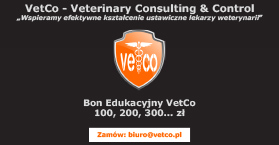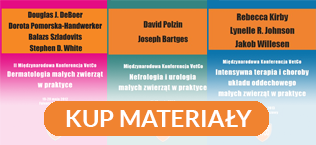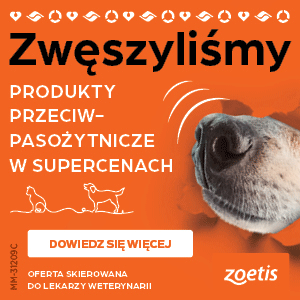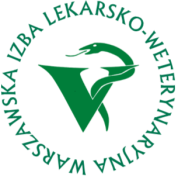Preparing for the ACTH stimulation test: Does the animal need to be fasted?
The dog or cat does not have to be fasted overnight, and lipemia does not appear to “clinically’ affect serum cortisol values. However, having a nonlipemic sample may be better in some situations, especially if serum cholesterol or triglycerides are being measuring on same sample.
Remember that the ACTH stimulation test is the most useful test for monitoring dogs being treated with trilostane (Vetoryl) or mitotane (Lysodren) see my blog entitled, Diagnosing Cushing's disease: Should the ACTH stimulation test ever be used? Both medications are fat-soluble drugs and must be given at time of meals, or the drugs will not be well absorbed.
With trilostane, it’s extremely important to give the morning medication with food, and then start the ACTH stimulation test 3 to 4 hours later.
Fasting these dogs on the morning in which the ACTH stimulation test is scheduled should be avoided since it invalidates the test results.
When a dog ‘s food is withheld, the absorption of trilostane from the gastrointestinal tract is decreased. This leads to low circulating levels of trilostane, resulting in little to no inhibition of adrenocortical synthesis. Therefore, serum cortisol values will higher when the drug is given in a fasted state than when it is given with food.
The higher basal or ACTH-stimulated cortisol results could prompt one to unnecessarily increase the daily trilostane dose. That misjudgment may lead to drug overdosage, with the sequelae of hypoadrenocorticism and adrenal necrosis in some dogs.
Recommended ACTH stimulation test protocol:
 There are many different published protocols for how to perform the ACTH stimulation testing. Both ACTH gel or synthetic ACTH can be used, but over the last 2 decades, the use of cosyntropin (Cortrosyn) has become the “gold standard” preparation for ACTH stimulation testing.
There are many different published protocols for how to perform the ACTH stimulation testing. Both ACTH gel or synthetic ACTH can be used, but over the last 2 decades, the use of cosyntropin (Cortrosyn) has become the “gold standard” preparation for ACTH stimulation testing.
In the USA, Cortrosyn is available through Henry Schein (800-872-4346; www.henryschein.com) where it can be purchased as an individual vial ($68/vial) or a box of 10 ($720 per box or 68/vial).
This is the protocol for the Cosyntropin (Cortrosyn) ACTH stimulation test that I recommend:
1. Collect baseline serum or plasma sample for cortisol determination.
Use of a serum separator tube should be acceptable for serum cortisol measurements, but check with your laboratory to ensure proper sample collection.
2. Prepare the ACTH preparation for administration (see below).
Cortrosyn is supplied by the manufacturer as a lyophilized cosyntropin powder in vials containing 0.25 mg (250 µg) of ACTH to be reconstituted with sterile saline solution.
In order to make this test more cost effective when using Cortrosyn and to make it easier to administer this dose to smaller dogs, I recommend diluting the Cortrosyn and dividing the solution into 25-µg to 50-µg aliquots in a tuberculin or insulin syringe, and then refrigerating or freezing the capped syringe.
For specific guideline on how to dilute the Cortrosyn and store it to extend it’s shelf-life, look for may next post entitled: How to extend your supply of Cortrosyn and lower the cost of ACTH stimulation testing.
3. Administer the cosyntropin at a dosage of a 5.0 µg/kg, up to a maximum dose of 250 µg; 1 entire vial).
This 5.0 µg/kg dosage will result in maximum stimulation of the adrenocortical reserve, the most important criteria for any ACTH stimulation protocol.
4. In dogs, the Cortrosyn can be administered either IV or IM, with equivalent cortisol results. Obviously, if the dog is dehydrated or in shock, the Cortrosyn must be administered intravenously.
In cats, its best to administer the Cortrosyn IV, because the adrenocortical response is more consistent and the peak is higher. Given subcutaneously, the Cortrosyn is not well absorbed in cats. In addition, giving Cortrosyn by the IM route is painful for cats and should be avoided.
5. Collect post-ACTH serum sample for cortisol determination 1 hour later.
6. After the clot has retracted, centrifuge both samples.
If using plasma or a serum tube without a separator, aspirate the plasma or serum and transfer into a plastic or glass vial.
Test protocol for tetracosactide (Synacthen):
 If you live in a part of the World other than the USA, it’s likely that you will be using tetracosactide (Synacthen) rather than Cortrosyn as the synthetic ACTH preparation. The chemical structure of tetracosactide and cosyntropin are identical, and the test protocol outlined above will work. However, because the cost of Synacthen is much less than Cortrosyn, it is common practice to administer Synacthen at the dose of a half vial (125 µg) to a cat or small dog and an entire vial (250 µg) to a larger dog, rather use the 5-ug/kg dosage.
If you live in a part of the World other than the USA, it’s likely that you will be using tetracosactide (Synacthen) rather than Cortrosyn as the synthetic ACTH preparation. The chemical structure of tetracosactide and cosyntropin are identical, and the test protocol outlined above will work. However, because the cost of Synacthen is much less than Cortrosyn, it is common practice to administer Synacthen at the dose of a half vial (125 µg) to a cat or small dog and an entire vial (250 µg) to a larger dog, rather use the 5-ug/kg dosage.
Źródło: endocrinevet.blogspot.com
The dog or cat does not have to be fasted overnight, and lipemia does not appear to “clinically’ affect serum cortisol values. However, having a nonlipemic sample may be better in some situations, especially if serum cholesterol or triglycerides are being measuring on same sample.
Remember that the ACTH stimulation test is the most useful test for monitoring dogs being treated with trilostane (Vetoryl) or mitotane (Lysodren) see my blog entitled, Diagnosing Cushing's disease: Should the ACTH stimulation test ever be used? Both medications are fat-soluble drugs and must be given at time of meals, or the drugs will not be well absorbed.
With trilostane, it’s extremely important to give the morning medication with food, and then start the ACTH stimulation test 3 to 4 hours later.
Fasting these dogs on the morning in which the ACTH stimulation test is scheduled should be avoided since it invalidates the test results.
When a dog ‘s food is withheld, the absorption of trilostane from the gastrointestinal tract is decreased. This leads to low circulating levels of trilostane, resulting in little to no inhibition of adrenocortical synthesis. Therefore, serum cortisol values will higher when the drug is given in a fasted state than when it is given with food.
The higher basal or ACTH-stimulated cortisol results could prompt one to unnecessarily increase the daily trilostane dose. That misjudgment may lead to drug overdosage, with the sequelae of hypoadrenocorticism and adrenal necrosis in some dogs.
Recommended ACTH stimulation test protocol:
 There are many different published protocols for how to perform the ACTH stimulation testing. Both ACTH gel or synthetic ACTH can be used, but over the last 2 decades, the use of cosyntropin (Cortrosyn) has become the “gold standard” preparation for ACTH stimulation testing.
There are many different published protocols for how to perform the ACTH stimulation testing. Both ACTH gel or synthetic ACTH can be used, but over the last 2 decades, the use of cosyntropin (Cortrosyn) has become the “gold standard” preparation for ACTH stimulation testing.In the USA, Cortrosyn is available through Henry Schein (800-872-4346; www.henryschein.com) where it can be purchased as an individual vial ($68/vial) or a box of 10 ($720 per box or 68/vial).
This is the protocol for the Cosyntropin (Cortrosyn) ACTH stimulation test that I recommend:
1. Collect baseline serum or plasma sample for cortisol determination.
Use of a serum separator tube should be acceptable for serum cortisol measurements, but check with your laboratory to ensure proper sample collection.
2. Prepare the ACTH preparation for administration (see below).
Cortrosyn is supplied by the manufacturer as a lyophilized cosyntropin powder in vials containing 0.25 mg (250 µg) of ACTH to be reconstituted with sterile saline solution.
In order to make this test more cost effective when using Cortrosyn and to make it easier to administer this dose to smaller dogs, I recommend diluting the Cortrosyn and dividing the solution into 25-µg to 50-µg aliquots in a tuberculin or insulin syringe, and then refrigerating or freezing the capped syringe.
For specific guideline on how to dilute the Cortrosyn and store it to extend it’s shelf-life, look for may next post entitled: How to extend your supply of Cortrosyn and lower the cost of ACTH stimulation testing.
3. Administer the cosyntropin at a dosage of a 5.0 µg/kg, up to a maximum dose of 250 µg; 1 entire vial).
This 5.0 µg/kg dosage will result in maximum stimulation of the adrenocortical reserve, the most important criteria for any ACTH stimulation protocol.
4. In dogs, the Cortrosyn can be administered either IV or IM, with equivalent cortisol results. Obviously, if the dog is dehydrated or in shock, the Cortrosyn must be administered intravenously.
In cats, its best to administer the Cortrosyn IV, because the adrenocortical response is more consistent and the peak is higher. Given subcutaneously, the Cortrosyn is not well absorbed in cats. In addition, giving Cortrosyn by the IM route is painful for cats and should be avoided.
5. Collect post-ACTH serum sample for cortisol determination 1 hour later.
6. After the clot has retracted, centrifuge both samples.
If using plasma or a serum tube without a separator, aspirate the plasma or serum and transfer into a plastic or glass vial.
Test protocol for tetracosactide (Synacthen):
 If you live in a part of the World other than the USA, it’s likely that you will be using tetracosactide (Synacthen) rather than Cortrosyn as the synthetic ACTH preparation. The chemical structure of tetracosactide and cosyntropin are identical, and the test protocol outlined above will work. However, because the cost of Synacthen is much less than Cortrosyn, it is common practice to administer Synacthen at the dose of a half vial (125 µg) to a cat or small dog and an entire vial (250 µg) to a larger dog, rather use the 5-ug/kg dosage.
If you live in a part of the World other than the USA, it’s likely that you will be using tetracosactide (Synacthen) rather than Cortrosyn as the synthetic ACTH preparation. The chemical structure of tetracosactide and cosyntropin are identical, and the test protocol outlined above will work. However, because the cost of Synacthen is much less than Cortrosyn, it is common practice to administer Synacthen at the dose of a half vial (125 µg) to a cat or small dog and an entire vial (250 µg) to a larger dog, rather use the 5-ug/kg dosage.Źródło: endocrinevet.blogspot.com










